Among all the rubble left by decades of distrust littering the road to a nuclear deal, there is one outsize boulder that dwarfs the rest. For domestic political reasons, the Obama administration needs to demonstrate that Iran’s capacity to enrich uranium has been radically shrunk by any deal signed in Vienna. The Rouhani government has to demonstrate the very opposite in Tehran.
The fixation with the number of centrifuges is nonsensical on both sides. Iran does not need its existing enrichment capacity for its nuclear energy needs in the foreseeable future. Russia is contracted to supply the fuel for the Bushehr reactor until 2021, and ready to do so after that. The warranty on the Russian-built nuclear power station would be void if Iran used home-enriched fuel. It would be a dangerous thing to do. The contract for the two new reactors Moscow is going to build at Bushehr, with an option for six more, also envisages Russian-supplied fuel.
The US fixation on centrifuge numbers is only slightly less absurd. The idea is that Iran’s ‘breakout time’ (the period it would theoretically take for Tehran to amass enough fissile material for a warhead) should be at least a year. That implies an enrichment capacity of less than 4,000 SWU (separative work units) roughly equivalent to 4,000 of Iran’s current, inefficient centrifuges. At the moment, Iran has about 10,200 centrifuges in operation (out of a total of 19,000 installed).
The Obama administration has boxed itself in by making a year’s breakout the virtually sole measure of success at the talks. It seems to have drifted into it. Back in April, Secretary of State John Kerry was talking more vaguely of six to twelve months, but in subsequent briefings to Congress, state department officials seemed to have reverted to reverted to the single, higher target.
This does not add up from an international security point of view. As many arms control experts have pointed out, if Iran wanted to make a bomb, ‘breaking out’ using its declared facilities is the least likely route. It would almost to be spotted long before making a single warhead, and provide a clear casus belli for its enemies.
As James Acton at the Carnegie Endowment for International Peace and others have pointed out, the much greater risk is Iran ‘sneaking out’, constructing a covert parallel programme. So failing to agree a deal that would have entrenched greater monitoring and transparency, only because it fell short of guaranteeing a year’s ‘breakout’ time would be a loss for security and non-proliferation.
As Kelsey Davenport, the director of nonproliferation policy at the Arms Control Association said:
The centrifuge number has become symbolic of the deal itself. It’s being measured by a single metric. But if you have daily access to enrichment sites, and you can detect deviation within days, and you have months to respond.
This blinkered vision is one reason for pessimism. The other is the complex interlocking nature of sanctions. Obama cannot lift sanctions imposed by Congress. He can only waive them temporarily. The EU can vote to lift its oil and banking embargoes, but the experience of the interim deal agreed last November suggests that a partial easing restrictive measures only has a limited and delayed effect. Banks are risk-averse and will not handle Iranian payments if they think they might be sanctioned later under US law, determined by a Republican Congress. The right to sell oil again is of limited benefit if Iran cannot get access to the revenue.
Looked on from Rouhani’s point of view, he risks coming away from Vienna with paper concessions that shrivel up on his return to Tehran. In a meeting between Kerry and Zarif in Oman earlier this month, aimed at breaking the deadlock before this week’s Vienna talks, the Iranian delegation made an offer to ship almost all its stock of low-enriched Uranium Hexafluoride to Russia. This is significant because this UF6 gas is the form in which uranium can be enriched further, so it is the starting point of any bid to make high enriched uranium for a bomb.
According to Davenport’s calculations, shipping out all the UF6 would double Iran’s ‘breakout’ time from three to six months, with its current stock of about 10,000 operating centrifuges. The Associated Press cites diplomats that Iran could be ready to come down to 8,000 centrifuges (or SWU equivalent). With near-zero UF6 stocks, that would stretch ‘breakout’ to eight months.
But for those concessions, Iran would want something solid on sanctions. Zarif has argued that if Obama cannot permanently lift US sanctions, Iran should be freed of UN Security Council restrictive measures. That might be difficult for the arms embargo and restrictions on dual use technology, but possible for banking and other economic restrictions.
The potential for this sort of creativity gives some room for optimism. A far more solid foundation for hope is the potentially catastrophic consequences of failure. A hardline US Congress, following the Republican capture of the Senate this month, is preparing to pass new sanctions that Obama would find it hard to veto, or at least sustain a veto, in the absence of a deal. New sanctions would in turn draw a response from Iranian hardliners in the Majlis. They would demand Iran shrug off the restrictions accepted as part of last November’s interim deal and resume production of ‘medium-enriched’ 20% uranium, for example. That would bring back the threat of military action from Israel.
This prospect should keep all the parties in Vienna from declaring failure if there is no deal on November 24. They are more likely to ask for an extension and if possible come out with a piece of paper outlining a framework for agreement or a set of principles. But extension will not make it an easier to make a deal. It could instead make it harder as opponents of an agreement rally against what they will portray as diplomats playing for time.
Failure would be a heavy setback for both Obama and Rouhani. But there are worrying signs that Rouhani is making preparations for a Plan B, that would help him to survive collapse in Vienna or its aftermath. That involves rhetoric, repeated by Zarif on arrival in Vienna, blaming the West in advance for ‘excessive demands’. It also involves signing deals and memoranda of understanding with Russia and China, as an alternative to the full reintegration in the global economy Tehran was hoping for.
Such solutions remain a distant second-best for Iran, however. Rouhani won the presidency on the promise of fixing the country’s relations with the rest of the world. His plans for the economy are based on it. The Supreme Leader appears to share those economic goals. He appears well aware of the terrible consequences of Mahmoud Ahmadinejad’s mismanagement. With a little more creativity over sanctions and centrifuges, there are still precarious grounds for hope.
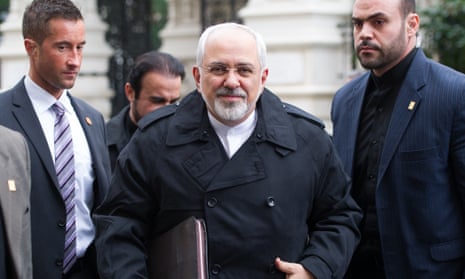
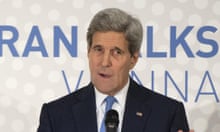


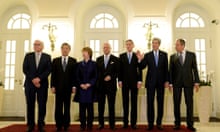
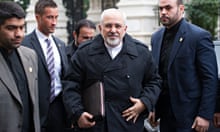
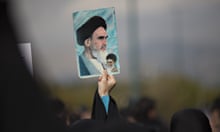

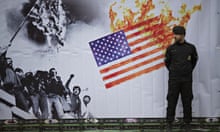

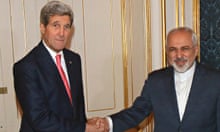
Comments (…)
Sign in or create your Guardian account to join the discussion